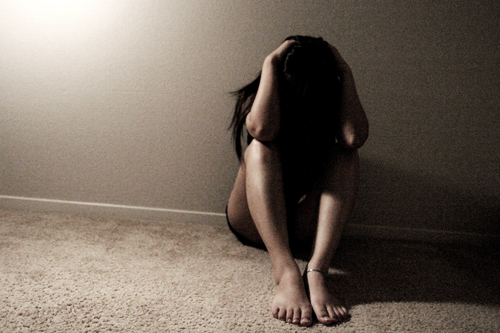
Recognizing that the gloomy weather may be getting you down is important, but treating that depression with nutritious food and exercise is necessary and will help to pull you out of the dumps.
It’s that time of year when gloomy, overcast Portland rears its ugly head. We may not see sunshine for days on end, and we all have our heads down, facing the ground as we dodge the rain.
Shorter daylight hours and lack of sunshine prompts a biochemical imbalance in the brain, linked to what we commonly know as Seasonal Affective Disorder, or SAD, according to the American Psychiatric Association.
“Fall and winter are times of year when we do see folks who have an increase of low energy, low motivation,” said Marcy Hunt-Morse, director of Counseling Services at the PSU Center for Student Health and Counseling. This is true not only because of the weather, but also because of stress and anxiety brought on by school.
The APA claims that the farther someone lives from the equator, the more likely they are to
develop SAD. In middle-to-northern latitudes, such as here in the Northwest, instances of SAD can be as high as 25 percent.
Furthermore, the typical age of onset is between 18 and 30, meaning college students in Oregon are especially susceptible to these feelings of seasonal depression.
At a time of year when we’re all feeling a little blah, it can be easier to hide under the covers than show up for class, and outside seems like the last place anyone wants to be.
However, if you’re feeling down because of the cold and wet weather, it’s more important than ever to get outside, eat well and get a good amount of sleep, Hunt-Morse advised.
“Try to look at your sleep patterns. Get back onto a good sleep rhythm. Get outside, even [if] just for a walk. Breathe in some fresh air,” she said.
The APA explains that melatonin, a sleep-related hormone, could also be tied to SAD. Melatonin levels increase during times of darkness, so the longer you are in the dark the more melatonin you produce.
It therefore becomes very important to regulate how much you are sleeping, taking care not to oversleep and making sure you are spending time outdoors.
Even when it seems gloomy, even if it seems that there’s no sunshine, the sun is still there.
“People who have been outside, even for 20 to 30 minutes, have seen an improvement,” Hunt-Morse said. At this time of year there is less light, so it’s even more important to seek it out.
But if you suspect that it might be more than just the winter blues, it’s important to recognize those symptoms as well.
The National Organization of Seasonal Affective Disorder says that there are varying degrees of SAD. While SAD can be debilitating to some, many function well with SAD for a few months a year. And while the most common months for experiencing SAD are December to February, it is important to keep an eye on your symptoms.
If you’re starting to miss class and you’re not enjoying hanging out with your friends, these may be signs of something more serious.
“The earlier that someone notices that something doesn’t feel right, that’s when I would encourage [them] to come talk to someone,” Hunt-Morse said.
SAD symptoms resolve after a certain period of time, while chronic depression symptoms persist.
As we’re almost halfway through winter term, and the days are starting to get longer, try to find ways to get outside and exercise, keep track of your sleep patterns and cook yourself good, healthy food.
Have potlucks, see your friends or go for a hike. Pretty soon the flowers will be out, and there will be a brighter sun in the sky. The dreary days are almost over!

